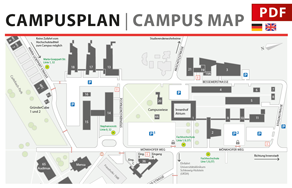3-SOS (TriSOS)
Smart Object Systems, Self-Organizing Systems, Service Oriented Systems
| Duration: | 01.12.2008 - 31.12.2012 |
| Project Leader: | Prof. Dr.-Ing. Horst Hellbrück |
| Staff: | Dipl.-Ing. (FH) Joachim Kaczmareck, Dr.-Ing. Torsten Teubler, Dr.-Ing. Mohamed Hail |
Background

Fig1.: TriSOS-Node
So called Embedded Systems are devices like mobile phones, mp3-players, DVBT-Receiver, automotive control boxes or ticket machines. Embedded Systems are Computers with CPU, Memory and IO Devices - compared to Personal Computers characteristics like type of constructions, memory size, and IO are tailored to the intended use. Embedded Systems e.g. enable precise diagnostics in medical application, reduce emissions and better stability in curves like ESP and in form of DVBT-Recorder, digital camera and mobile phone are continous companions. Especially within the field of Embedded Systems Germany keeps a leading role due to a competent and large automotive industry.
Wireless Networking of Embedded Systems via RF technologies enable many new application in all areas of life and industry sectors. To implement systems with numerous wireless connected devices new approaches for programming and new protocols are needed that allow a self-organization of devices and achieve the required robustness. Wireless technologies under investigation include WLAN, UWB with high data rates and 802.15.4 and RFID where only a few bits are transferred.rreichen sollen. Die eingesetzten Funktechnologien reichen dabei von WLAN über UWB mit hohen Übertragungsbandbreiten, bis hin zu Zigbee und RFID-Lösungen, wo nur einige Bits übertragen werden.
Objective
The Lübeck University of Applied Sciences has started a Laboratory to enable practical training on networked Embedded Systems. TriSOS 3xSOS (Smart Object Systems, Self Organizing Systems, Service Oriented Systems) is funded by Innovationsfonds SH.
Results
The laboratory created includes:
- a platform for embedded systems
- Multiple embedded systems with integrated radio interfaces that can be used to connect nodes together to form a wireless sensor network
- a variety of simple sensors to determine the location of the embedded systems (localization) and to detect the environment (context)
- 2 Gateway systems for linking the embedded systems with an IP network (WLAN/Ethernet)
- 6 workstation PCs for developing and emulating the software before programming on the target system, simulating radio protocols, sensor networks and programming the embedded systems.
In addition to the actual laboratory room, where mainly workstations are located and programming work takes place, the systems are also used in open-field experiments (corridor, campus of the TH) for long-term tests. Experiments are carried out in specialization subjects so that students can gain an in-depth understanding of the problems that arise in the process.

